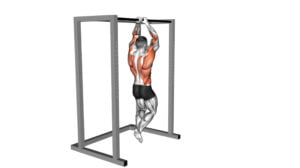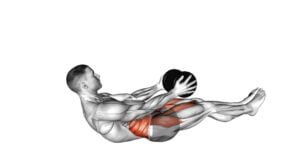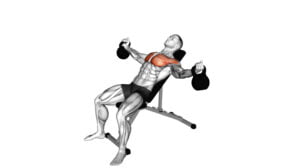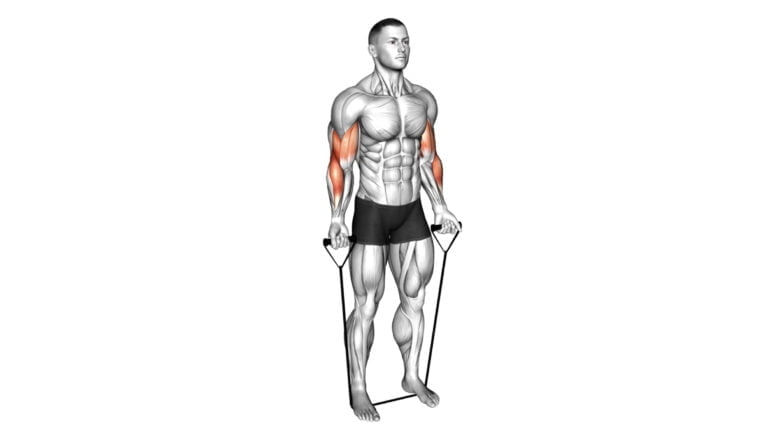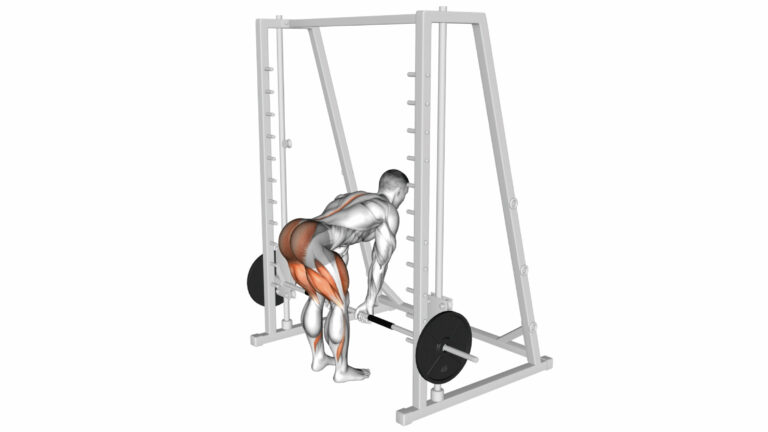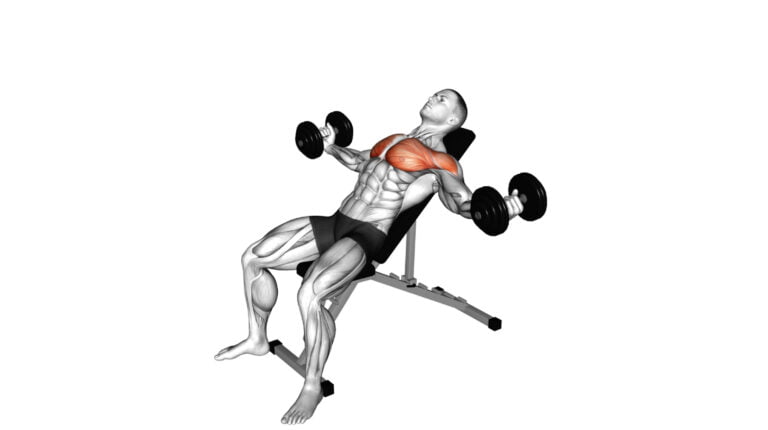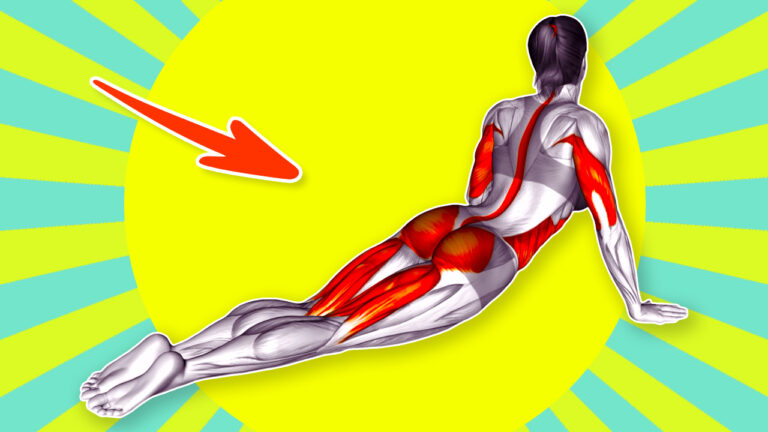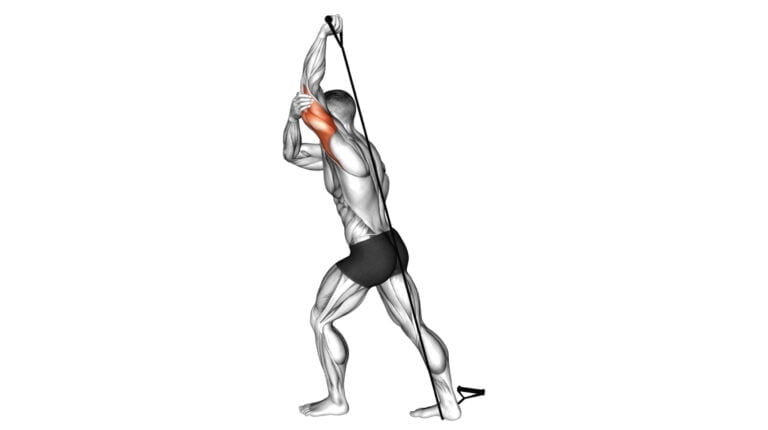The 5 Best Strength Exercises For Athletes To Boost Performance And Power

If you’re an athlete looking to elevate your game, it’s time to focus on the foundation of peak performance: strength exercises for athletes. Sure, skill training is crucial, but raw power and explosive strength can be the ultimate game-changers.
With over a decade of experience in sports physiology and coaching top competitors across various disciplines, I’ve witnessed firsthand how targeted strength training can drastically improve athletic prowess.
Strength isn’t just about bulging biceps—it’s about enhancing your entire body’s potential to perform at its best when it counts. This article will dive into five powerhouse exercises that are tried-and-true staples in any serious athlete’s regimen.
They have been carefully selected for their ability to maximize performance and power across a wide range of sports by seasoned professionals like myself. Keep reading; these insights might just revolutionize your routine and take your abilities to new heights.

Ready? Let’s get stronger together!
Key Takeaways
- Barbell Box Squats, Clean – grip Front Squats, Clean Pulls, Deadlifts from Deficit, and Front Rack Lunges are top strength exercises that improve lower body power and overall athletic performance.
- Strength training enhances not just muscle size but also contributes to better cardiovascular health, flexibility, coordination, and body composition for athletes.
- Athletes should incorporate these exercises 2 – 3 times a week with appropriate weight and progression while ensuring proper form to prevent injury and maximize gains.
- Customizing workout plans including these exercises can benefit sports – specific movements like sprinting and jumping by targeting multiple muscle groups simultaneously.
- Having varied phases in strength training such as structural balance, hypertrophy, eccentric/isometric strength development is essential for comprehensive physical development.
Benefits of Strength Training for Athletes

Strength training for athletes offers numerous benefits, including increased muscular strength and endurance, improved cardiovascular health, enhanced flexibility, and better body composition.
These advantages can lead to improved athletic performance and overall physical well-being.
Increased muscular strength
Exercising with barbells and weights isn’t just about looking good – it’s about building powerhouses of muscle that enhance athletic performance. Through a steady regime of front squats, deadlifts, and presses, athletes convert effort in the weight room into raw strength.
This transformation grants them the ability to sprint faster, jump higher, and endure longer on their playing fields. Muscular strength translates directly into improved force production; every push-up or clean pull done against resistance carves out stronger muscle fibers ready for action.
Lifting heavier loads during training sessions is your ticket to mastering one-repetition maximum lifts that sports often demand. By carefully adding more weight over time—a technique known as progressive overload—muscles adapt by growing larger and mightier.
The result? A body that not only looks fit but functions at its peak too. High reps aren’t the key here; instead, focus on compound movements like box squats which target multiple joints and muscles groups at once for full-body strengthening effects.
Increased muscular endurance
Having built a solid foundation of muscular strength, athletes can further enhance their performance by working on their muscular endurance. This critical component allows for sustained activity over longer periods without succumbing to fatigue.
Athletes with strong muscular endurance can perform repeated contractions against resistance for an extended time – think marathons vs. sprints. This capability is not just crucial for long-distance runners but also benefits basketball players who need to maintain high energy levels throughout the game.
To develop this kind of stamina, incorporating exercises like barbell front rack lunges and Romanian deadlifts into your routine proves invaluable. These movements push your muscles to adapt by improving both aerobic and anaerobic pathways that supply energy during strenuous activities.
It’s about training smarter, not just harder; understanding that recovery is part of the equation helps ensure that every session builds upon the last, leading to incredible gains in muscle resilience and capacity for work.
Increased cardiovascular endurance

Strength training goes beyond building muscle; it boosts your heart’s fitness too. By engaging in exercises like deadlifts and squats, you not only work on major muscle groups but also challenge your heart to pump more efficiently.
This increased demand helps strengthen the cardiac muscles, similar to how running or cycling would, but with the added benefit of resistance.
Elevating your heart rate consistently through weight lifting can lead to improved endurance over time. You’ll find yourself less out of breath, able to handle longer sessions or heavier weights without feeling exhausted as quickly.
Your body becomes a powerhouse at using oxygen effectively during workouts and everyday activities alike.
Increased flexibility
To maximize athletic performance, increased flexibility is crucial for preventing injuries and enhancing overall agility. By incorporating dynamic stretching exercises like leg swings, arm circles, and lunges into your warm-up routine, athletes can improve their joint range of motion and muscle elasticity.
These practices enable athletes to move more efficiently on the field or court while minimizing the risk of strains or sprains during explosive movements.
Moreover, maintaining a consistent flexibility training regimen can help reduce post-exercise muscle soreness and enhance recovery time between workouts. A focused approach to flexibility not only benefits an athlete’s physical well-being but also contributes to improved functional movement patterns essential for peak performance in sports competitions.
Improved body composition
Transitioning from increased flexibility to improved body composition, strength training is also beneficial for optimizing the athlete’s body composition. It helps in reducing body fat and increasing lean muscle mass, leading to a more favorable ratio of muscle to fat.
By engaging in targeted strength exercises, athletes can sculpt their physique for enhanced performance and aesthetics, making them more competitive on the field or court.
Incorporating the top 5 best strength exercises mentioned earlier not only contributes to muscular development but also plays an essential role in improving metabolic rate and overall body composition.
Strength Training Programs for Athletes

When it comes to strength training programs for athletes, it’s essential to focus on different phases that target specific aspects of physical performance. These include structural balance, hypertrophy, eccentric/isometric strength, and speed/strength & plyometrics.
Each phase plays a crucial role in developing overall strength and power for athletes.
Phase 1: Structural Balance
In Phase 1: Structural Balance, the main focus is on identifying and addressing any existing muscle imbalances. This phase aims to correct these imbalances through specific exercises that target weaker or underactive muscle groups.
By doing so, athletes can improve their overall stability and reduce the risk of potential injuries as they progress into more advanced strength training phases.
During this phase, it’s crucial to perform movements that engage stabilizing muscles while ensuring proper form and technique. Emphasizing unilateral exercises like single-leg squats and Bulgarian split squats helps in building balanced strength across both sides of the body.
Integrating core stability exercises further supports the development of a solid foundation for future strength gains and athletic performance, laying the groundwork for subsequent phases effectively.
Phase 2: Hypertrophy
In Phase 2, known as hypertrophy, athletes focus on increasing muscle size and strength through high-volume training. This phase aims to stimulate muscle growth using moderate to heavy loads for 8-12 repetitions per set.
By increasing the workload gradually over time, this phase encourages muscles to adapt and grow stronger and larger in size.
Athletes in the hypertrophy phase should prioritize compound exercises such as squats, deadlifts, bench presses, and rows. These movements engage multiple muscle groups simultaneously, promoting overall muscular development and growth.
Phase 3: Eccentric/Isometric Strength
Developing eccentric and isometric strength is crucial for athletes to improve performance and prevent injuries. Eccentric strength involves controlling muscles while lengthening, which helps in developing power and agility.
Isometric strength, on the other hand, focuses on holding a static position, enhancing stability and control during dynamic movements. By incorporating exercises that target eccentric and isometric muscle actions, athletes can enhance their overall strength and resilience for better athletic performance.
These training methods help build muscle endurance and contribute to injury prevention by strengthening tendons and ligaments. Athletes who focus on eccentric/isometric training can expect improved speed, explosive power, and enhanced control during rapid changes in movement direction.
Phase 4: Speed/Strength & Plyometrics
In Phase 4, athletes hone speed and strength to elevate their performance. Jump squats, box jumps, and medicine ball throws are vital tools to enhance explosive power. Plyometric exercises like these target fast-twitch muscle fibers for rapid force generation and improved athletic prowess.
Introducing agility ladder drills and cone drills further amplifies coordination, balance, and overall athleticism crucial in various sports disciplines. These dynamic movements not only optimize muscular power but also help reduce the risk of injury by reinforcing ligaments and tendons against sudden impacts.
Athletes endure high-intensity workouts to develop speed, agility, and strength needed for competitive advantage. The incorporation of plyometrics alongside traditional strength training promises a comprehensive approach toward achieving peak physical performance.
The Top 5 Best Strength Exercises for Athletes
Improve your athletic performance with these top 5 strength exercises that target multiple muscle groups, boost power, and enhance overall functional strength. Want to know more? Keep reading to find out how these exercises can take your game to the next level.
1. Barbell Box Squat
The barbell box squat is a fundamental exercise that targets the lower body, particularly the quadriceps, hamstrings, and glutes. By sitting back onto a sturdy box or bench with controlled form and then driving through the heels to stand up, this exercise mimics the motion of getting out of a chair.
This movement pattern helps athletes develop explosive power and strength in their legs while also improving hip mobility and stability.
Performing the barbell box squat can contribute to better sports performance by enhancing an athlete’s ability to generate force from the lower body. The controlled descent onto the box ensures proper depth and alignment, reducing stress on the knees while engaging key muscle groups essential for sprinting, jumping, or performing cutting maneuvers during athletic activities.
2. Barbell Clean-grip Front Squat
To perform the barbell clean-grip front squat, stand with your feet shoulder-width apart and position the barbell at shoulder level. Keep your elbows high and chest up as you lower into a deep squat, ensuring your knees track over your toes.
Drive through your heels to return to a standing position, maintaining an upright posture throughout the movement.
Engage the core and glutes to stabilize the spine and maintain proper alignment. This exercise targets the quadriceps, glutes, hamstrings, and core muscles while enhancing overall strength and stability in the lower body.
3. Barbell Clean Pull
Transitioning from the Barbell Clean-grip Front Squat to the Barbell Clean Pull, this explosive exercise hones in on building powerful hip and leg strength, making it a quintessential addition to any athlete’s training regimen.
The Barbell Clean Pull primarily targets the posterior chain — including the hamstrings, glutes, and lower back — promoting forceful extension and speed development. By executing a controlled explosion of lifting the bar as high as possible with an upright torso and without dipping into a full squat position, athletes can enhance their ability to generate quick bursts of power essential for sprinting, jumping, or explosive movements across various sports disciplines.
Executed correctly and at an appropriate weight level for progressive resistance training, athletes can elicit substantial gains in both strength and speed through Barbell Clean Pulls.
4. Barbell Deadlift from Deficit
The barbell deadlift from deficit is a powerful exercise for athletes aiming to improve lower-body strength and overall athletic performance. This variation involves standing on an elevated platform, such as weight plates, which increases the range of motion and targets the posterior chain more intensely.
By engaging muscles in the glutes, hamstrings, and lower back, athletes can enhance their explosiveness during activities like sprinting and jumping. Additionally, this exercise helps develop grip strength and reinforces proper lifting mechanics, making it a valuable addition to any athlete’s training regimen.
When executed with proper form and technique, the barbell deadlift from deficit can significantly contribute to greater force production in movements essential for various sports. Incorporating this exercise into a well-rounded strength training program can lead to improvements in speed, power, agility, and overall athletic prowess.
5. Barbell Front Rack Lunge
Transitioning from the powerful and challenging exercise of the Barbell Deadlift from Deficit, athletes can further enhance their lower-body strength and stability with the Barbell Front Rack Lunge.
This exercise targets the quadriceps, glutes, and hamstrings while also engaging the core for stability.
To perform this exercise, start by placing a barbell on the front of your shoulders using an overhand grip. With feet shoulder-width apart, step forward into a lunge position until both legs are bent at 90-degree angles.
How to Incorporate These Exercises into Your Training Routine

Utilize these strength exercises in a well-rounded workout plan, focusing on proper form and progression to maximize performance gains. For more detailed guidance on incorporating these exercises into your routine, read the full blog for expert advice and practical tips.
Proper form and technique
Maintain proper form and technique when performing these strength exercises to maximize effectiveness and minimize the risk of injury. Focus on maintaining a straight back, engaging your core, and keeping your knees in line with your toes during movements such as squats and lunges.
When deadlifting, ensure that your shoulders are pulled back and down while hinging at the hips to lift the barbell. For exercises like the clean pull or front squat, maintain a strong grip on the barbell with elbows lifted high.
Pay close attention to details such as foot placement, hand position, and body alignment to execute each exercise correctly.
Remember to start with lighter weights before progressing to heavier loads to master proper form without compromising safety. Gradually increase the weight as you become more comfortable with each movement.
Appropriate weight and progression
Choose an initial weight that challenges you but allows for proper form. As you become comfortable with the exercise, gradually increase the weight to continue challenging your muscles.
Keep a log of your progress to track the weights used and ensure a steady progression over time.
Adapt the amount of weight based on your strength levels and fitness goals. Gradually increasing the load helps build muscle strength without risking injury due to excessive strain.
Frequency and rest periods
Athletes should aim to incorporate strength exercises into their training routine at least 2-3 times per week. This frequency allows for adequate rest and recovery between sessions while still providing consistent stimulus for strength gains.
Rest periods between sets should generally range from 1-3 minutes, allowing enough time for muscle recovery while maintaining intensity during the workout.
When planning your training schedule, it’s essential to consider the balance between work and recovery, ensuring that muscles have ample time to repair and rebuild after challenging workouts.
Consistent frequency and appropriate rest periods can optimize performance improvements while minimizing the risk of overtraining or injury in athletes.
Sample workout plan
To optimize your athletic potential, follow this sample workout plan, incorporating the top 5 best strength exercises for athletes:
- Barbell Box Squat: Perform 3 sets of 8-10 reps to build lower body strength and explosiveness. Start with a weight that challenges you but allows proper form.
- Barbell Clean-grip Front Squat: Execute 4 sets of 6-8 reps to enhance quad and core strength. Focus on maintaining an upright torso position throughout the movement.
- Barbell Clean Pull: Complete 4 sets of 4-6 reps to develop explosive power in your posterior chain and improve your Olympic lifting performance.
- Barbell Deadlift from Deficit: Carry out 3 sets of 5-7 reps to strengthen the entire back chain, including hamstrings and glutes, promoting better overall athleticism.
- Barbell Front Rack Lunge: Perform 3 sets of 10-12 total reps (each leg) for improving single-leg stability and building quadriceps strength.
Conclusion

In conclusion, these strength exercises for athletes pack a powerful punch in boosting performance and power. Their practicality and efficiency make them easy to incorporate into training routines.
Championing the importance of these exercises cannot be overstated; their impact on athletic prowess is significant. As you embrace these strategies, there’s a wealth of potential improvements awaiting you.
Whether it’s through further reading or seeking professional guidance, there are resources available to support your journey. Let this be the catalyst that ignites your dedication to achieving peak athletic performance!
FAQs
1. What are the top strength exercises for athletes?
The back squat, push-ups, snatch, chin-up, and power clean rank as the best strength exercises for boosting performance and power in athletes.
2. Why is the back squat recommended for athletes?
Back squats target the lower-limb muscles and help build muscle mass essential for athletic power. They are a fundamental weightlifting exercise that improves overall lower-leg strength.
3. Can upper body exercises like push-ups improve athletic performance?
Absolutely! Push-ups strengthen chest, shoulder, and triceps muscles while also engaging your core, making them an excellent exercise to enhance full-body strength.
4. Are olympic lifts such as the snatch good choices for building athlete’s muscle tissue?
Yes! Olympic lifts like the snatch work on multiple muscle groups at once including lats and extensor muscles; they improve biomechanics and explosive power vital to athlete’s success.
5. How can rotator cuff strengthening benefit an athlete?
Strengthening the rotator cuff with specific exercises can prevent impingements or tears—common injuries among athletes—and supports healthy shoulder function during lifting weights or other activities.
6. Is it important to include eccentric training in an athlete’s regimen?
Definitely! Eccentric training focuses on controlling weight during lengthening of muscle tissue which is key in building strength without excessive stress on joints—an important aspect especially when recovering from injury.

Author
Years ago, the spark of my life’s passion ignited in my mind the moment I stepped into the local gym for the first time. The inaugural bead of perspiration, the initial endeavor, the very first surge of endorphins, and a sense of pride that washed over me post-workout marked the beginning of my deep-seated interest in strength sports, fitness, and sports nutrition. This very curiosity blossomed rapidly into a profound fascination, propelling me to earn a Master’s degree in Physical Education from the Academy of Physical Education in Krakow, followed by a Sports Manager diploma from the Jagiellonian University. My journey of growth led me to gain more specialized qualifications, such as being a certified personal trainer with a focus on sports dietetics, a lifeguard, and an instructor for wellness and corrective gymnastics. Theoretical knowledge paired seamlessly with practical experience, reinforcing my belief that the transformation of individuals under my guidance was also a reflection of my personal growth. This belief holds true even today. Each day, I strive to push the boundaries and explore new realms. These realms gently elevate me to greater heights. The unique combination of passion for my field and the continuous quest for growth fuels my drive to break new ground.





